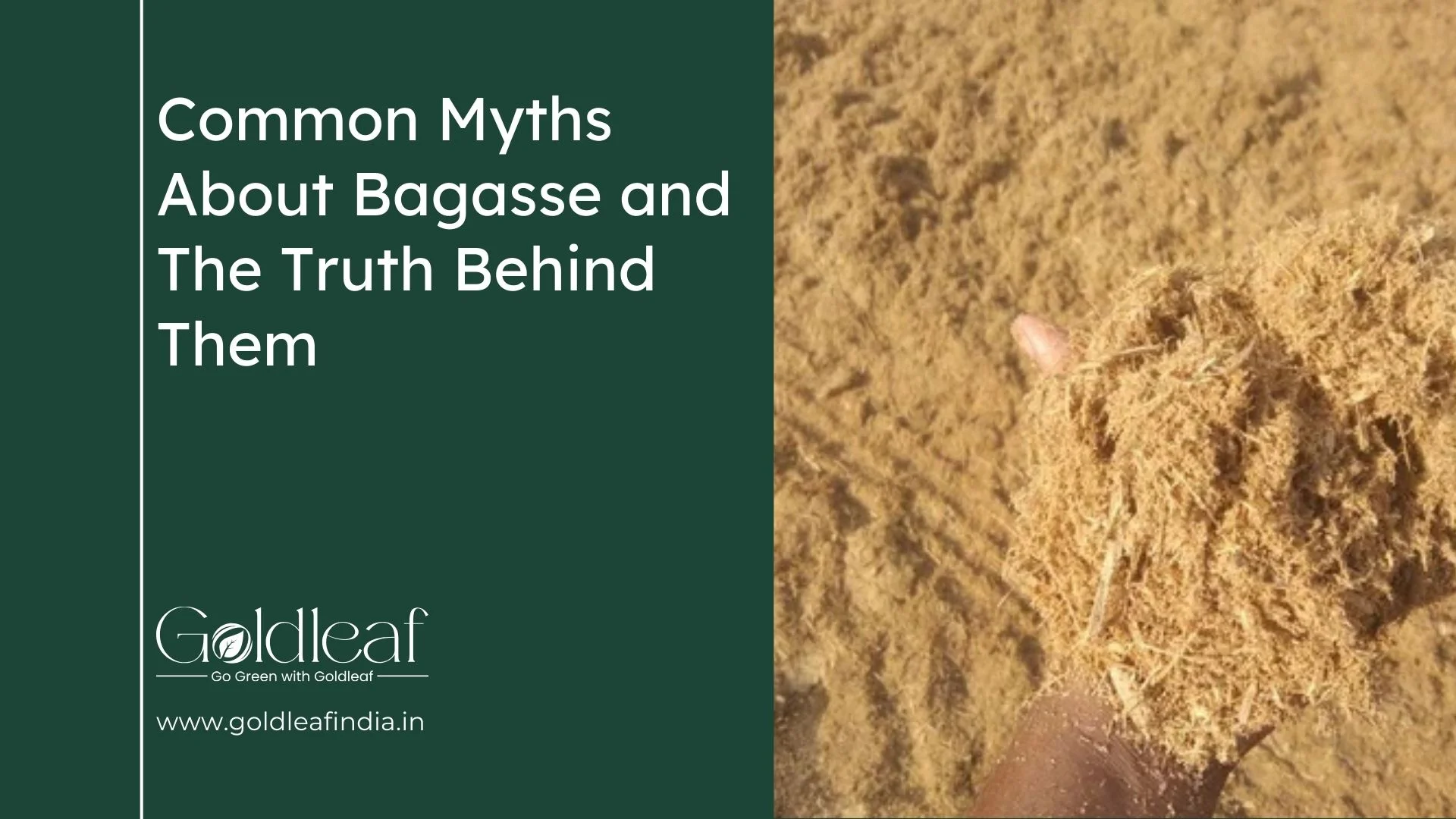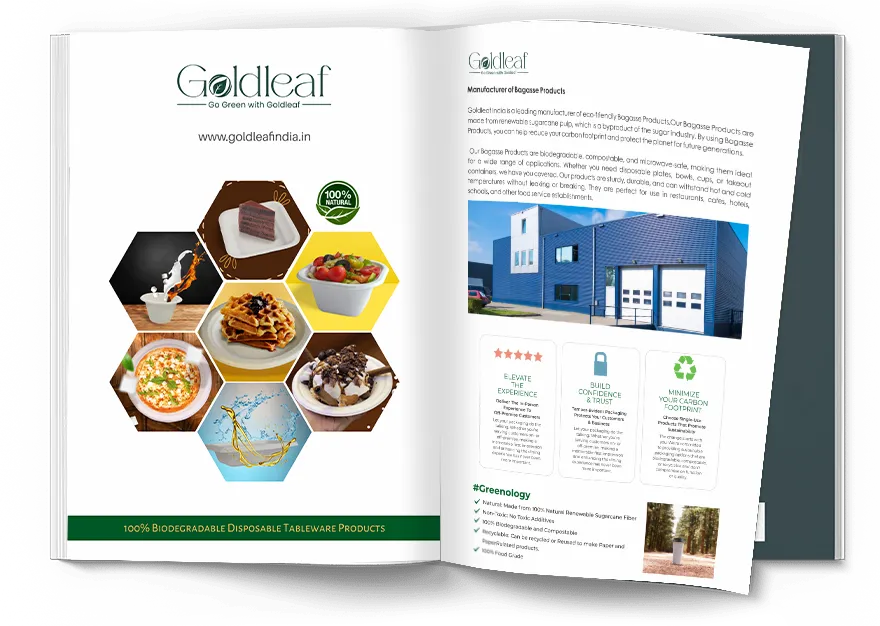Kết nối với nhóm của chúng tôi

- 2786
In the current fast-transitioning world towards more sustainable and eco-friendly practices, the by-product of the sugarcane process, bagasse, is showing up as a potential material for the manufacturing of disposable tableware and packaging. Although bagasse products are becoming increasingly popular, they are still surrounded by many myths that leave consumers confused. Read on in this article about the common myths surrounding bagasse, the truth of which you’ll be able to make informed decisions around this sustainable alternative.

Myth 1: Bagasse Products Contain Harmful Chemicals
Myth: Many people believe that bagasse products, like other biodegradable materials, might contain harmful chemicals that could leach into food.
Truth: Overall, bagasse tableware is regarded as safe for use. The material used to make it is natural and not made with harmful chemicals. Nevertheless, the products must have certifications such as FDA approval for the safety of food contact, otherwise, there is no guarantee that they are safe.
Myth 2: Bagasse Products Are Not Microwave-Safe
Myth: Some consumers think that bagasse products cannot be used in microwaves due to concerns about chemical leaching or structural integrity.
Truth: Microwave-safe bagasse tableware is typical since most of this product is safe to use in the microwave if you want to heat your food without scratching your stomach with harmful chemicals that might seep into your food. This should, however, be done of course, by allowing the manufacturer’s guidelines to control use.
Myth 3: Bagasse Products Cannot Hold Liquid Foods
Myth: There is a misconception that bagasse products are not suitable for holding liquid foods due to concerns about leakage.
Truth: Bagasse tableware is designed to contain both hard and soft food. The built can’t hold liquid foods as leakage-proof as plastic, but it will not generate troubles in containing soups, sauces, and some liquid-based foods.
Myth 4: Bagasse Products Are Not Suitable for All Types of Cuisines
Myth: Some people believe that bagasse tableware is limited in its use and cannot accommodate various cuisines.
Truth: Bagasse tableware is versatile and suitable for serving Asian, Western, and Mediterranean dishes. It's a neutral color and a simple design that can go with almost any presentation of a meal.
Myth 5: Bagasse Products Are Only Suitable for Single Use
Myth: Many assume that bagasse products are strictly for single use and cannot be reused.
Truth: Unlike many other tableware solutions, bagasse tableware is often used for one-time use, but it can be reused multiple times after proper washing and maintenance of the product. Nevertheless, its lifespan may be shorter than durable alternatives such as ceramic or stainless steel.
Myth 6: Bagasse Products Are Expensive
Myth: There is a perception that bagasse products are prohibitively expensive compared to traditional plastic or paper disposables.
Truth: The market is highly competitive compared to other eco-friendly alternatives and the prices of bagasse tableware are competitive. This is very affordable for both businesses as well as consumers who need to reduce the impact on the environment.
Myth 7: Bagasse Products Cannot Withstand High Temperatures
Myth: Some believe that bagasse products are not suitable for high-temperature applications.
Truth: Bagasse tableware can stand up to high temperatures, up to 200 degrees Fahrenheit (93 degrees Celsius or so), which means that the bagasse tableware may be used to heat food in the microwave. Bagasse packaging is also able to take temperatures up to 220°F (104°C) and can therefore be used with both hot and cold food.
Myth 8: Bagasse Products Cannot Be Composted
Myth: There is a misconception that bagasse products are not compostable and will end up in landfills like traditional plastics.
Truth: Bagasse tableware is also compostable and easy to decompose in commercial composting facilities. Due to this, it is a wonderful option to reduce waste and create a sustainable approach.
Myth 9: Bagasse Products Are Not Water-Resistant
Myth: Some people think that bagasse products are not water-resistant and will become soggy when exposed to liquids.
Truth: Bagasse is designed not to be as waterproof as plastic, but not as soggy as plastic when warehousing liquid foods. They are naturally durable, and it is possible to expose them to liquids without damaging them quite as easily as with some paper-based alternatives.
Myth 10: Bagasse Products Contribute to Deforestation
Myth: A common myth is that the production of bagasse products contributes to deforestation.
Truth: It is the byproduct of sugarcane stalks that are left after the juice has been extracted from the stalk; they consist of fibrous material. Using bagasse in disposables decreases waste and allows for a material that is normally discarded or burned to be used in the production of new products.
Myth 11: Biodegradable Packaging Takes Too Long to Break Down
Myth: Many people assume biodegradable materials, including bagasse, take years to decompose, making them no better than traditional plastics.
Truth: According to the packaging, bagasse-based packaging can break down in 90 days or less in ideal composting conditions. It is much faster than plastic, which can often take hundreds of years to break down.
Myth 12: Bagasse Products Are Not Safe for Kids
Myth: Some parents worry about the safety of bagasse products for children, fearing chemical leaching or irritation from fibers.
Truth: Usually, bagasse products are made from natural, plant-based fibers and as such are generally safe to use, including children. These are not harmful or toxic chemicals or toxins, which makes them safe and healthy food packaging.
Conclusion
With their features such as their transparency, non-toxicity, and biodegradability compared to listed toxic plastics, Bagasse products are considered an alternative that holds promises in addressing the issue of plastic disposables, bringing in a positive and environmentally friendly alternative to plastics in disposable tableware and packaging. To learn more about the myths and truths concerning bagasse, consumers can better understand the relationship between bagasse and our environment to make better and more informed decisions about their purchases that align with the values and support a more environmentally conscious lifestyle. Continued growth in demand for sustainable products means the myths surrounding bagasse will be debunked again, and the truth about its safety, durability, and environmental benefits will be exposed.
Additional Insights: Benefits of Bagasse Products
Eco-Friendly Nature
These are biodegradable and compostable products, keeping landfill waste at a minimum and cutting down on environmental impact. Whereas plastics can take up to hundreds of years to break down, bagasse just decays in months if the conditions are conducive.
Renewable Resource
Sugarcane bagasse is a renewable resource since sugarcane is a rapidly growing crop. It guarantees raw material supply to bagasse products while practicing sustainable agriculture.
Cost-Competitive
Due to advancements in manufacturing and the growth of demand, bagasse products may have been more expensive in the past, but with weighted resources, competitive costs have been achieved in these products with traditional plastics. Also, there are long-term environmental benefits and potential savings in the costs of waste management in purchasing bagasse products.
Versatility and Durability
Bagasse products are versatile and can be applied to many ways of usage such as take-out containers to egg cartons. The fact is, they are naturally durable, grease resistant, and heat resistant; therefore, they can go on either cold or hot food.
Customization Options
Bagasse products can be customized with food-safe inks or embossed with logos, allowing businesses to maintain their brand identity while adopting sustainable packaging solutions.
Future of Bagasse Products
With more and more people becoming environmentally conscious, the demand for sustainable products such as bagasse appears to rise. Manufacturing and production go on innovating, so bagasse products will continue to become more durable, cheaper, and able to be customized. Not only does this lead to a change in sustainable packaging that is more beneficial to Mother Earth, but it also benefits businesses that follow their practices with consumer ideals.
Finally, bagasse products can be good alternatives to traditional plastics in terms of the environment and the need by consumers to lead a sustainable life. Knowing and disproving common myths will bring us closer to harnessing the full potential of bagasse to produce something greener, something eco-friendly, for the future.
- Các sản phẩm
- Bowl
- Clamshell
- Compartment Plate
- Plate
- Tea Cup
© 2024 , Goldleaf ,
Tất cả quyền được bảo lưu.
Made & Managed by Lightlink Solutions





